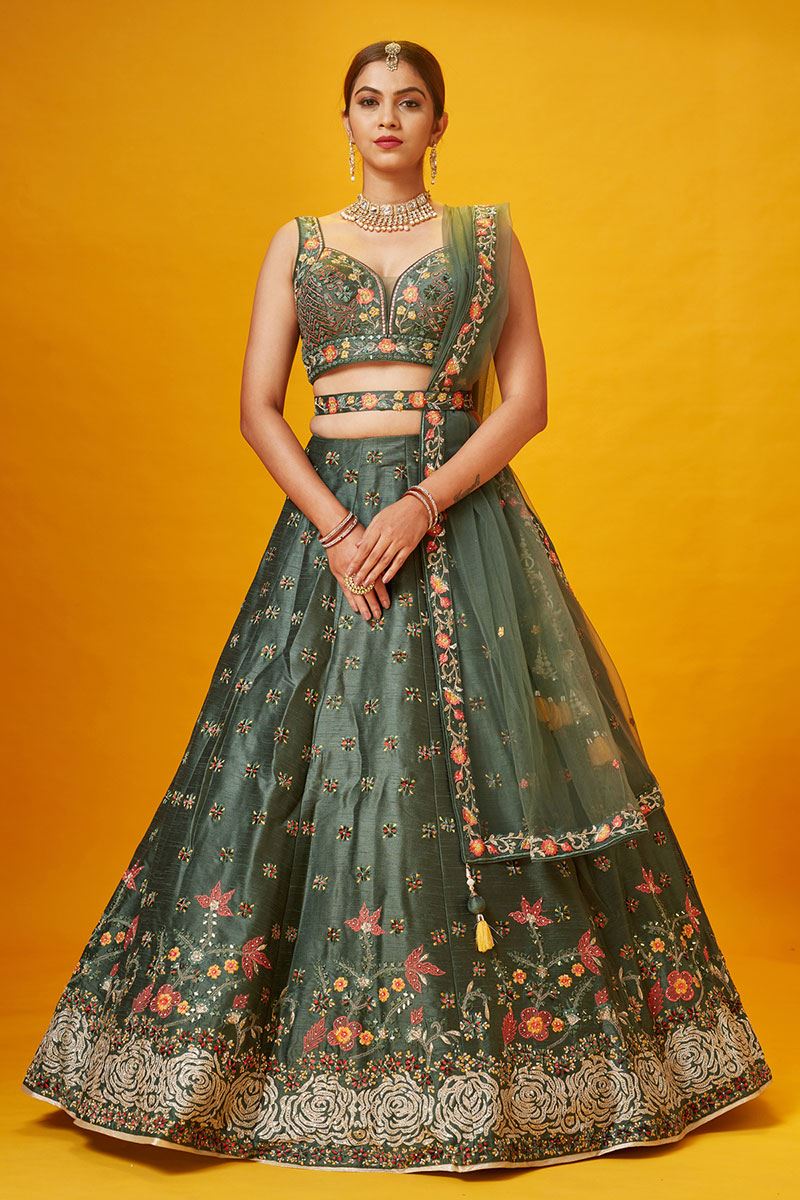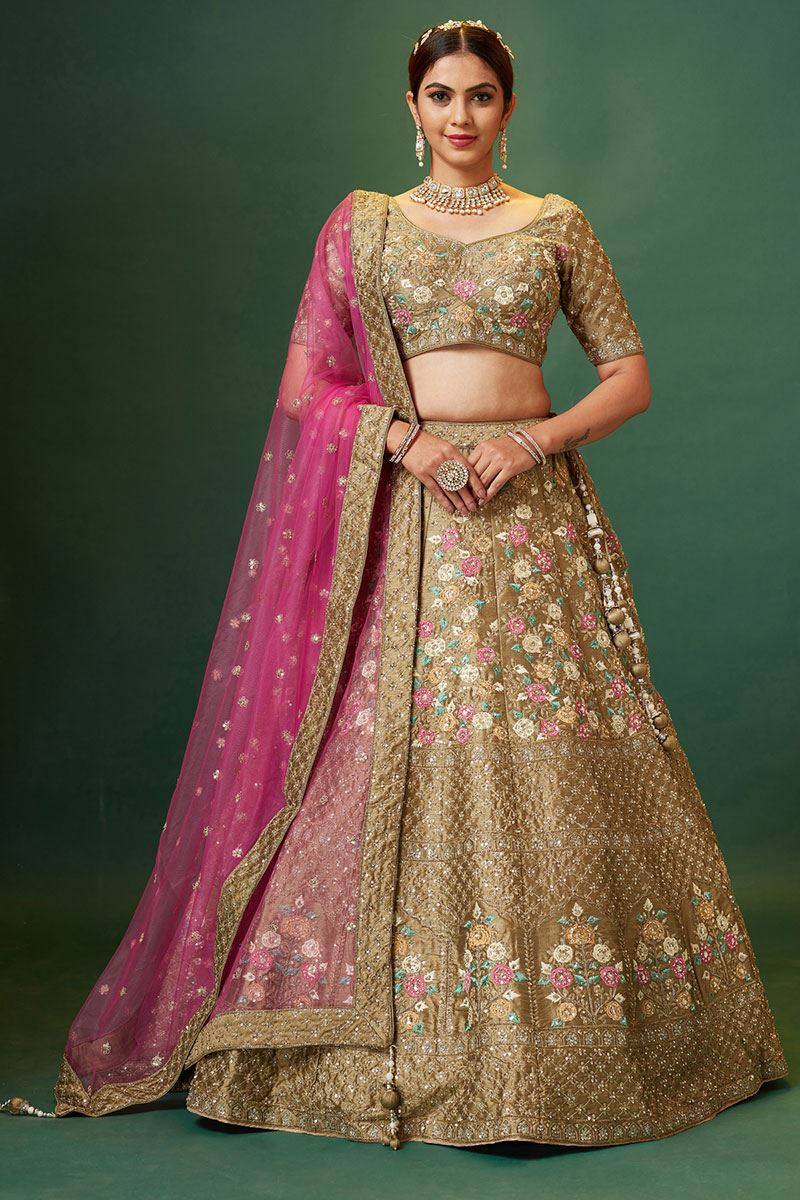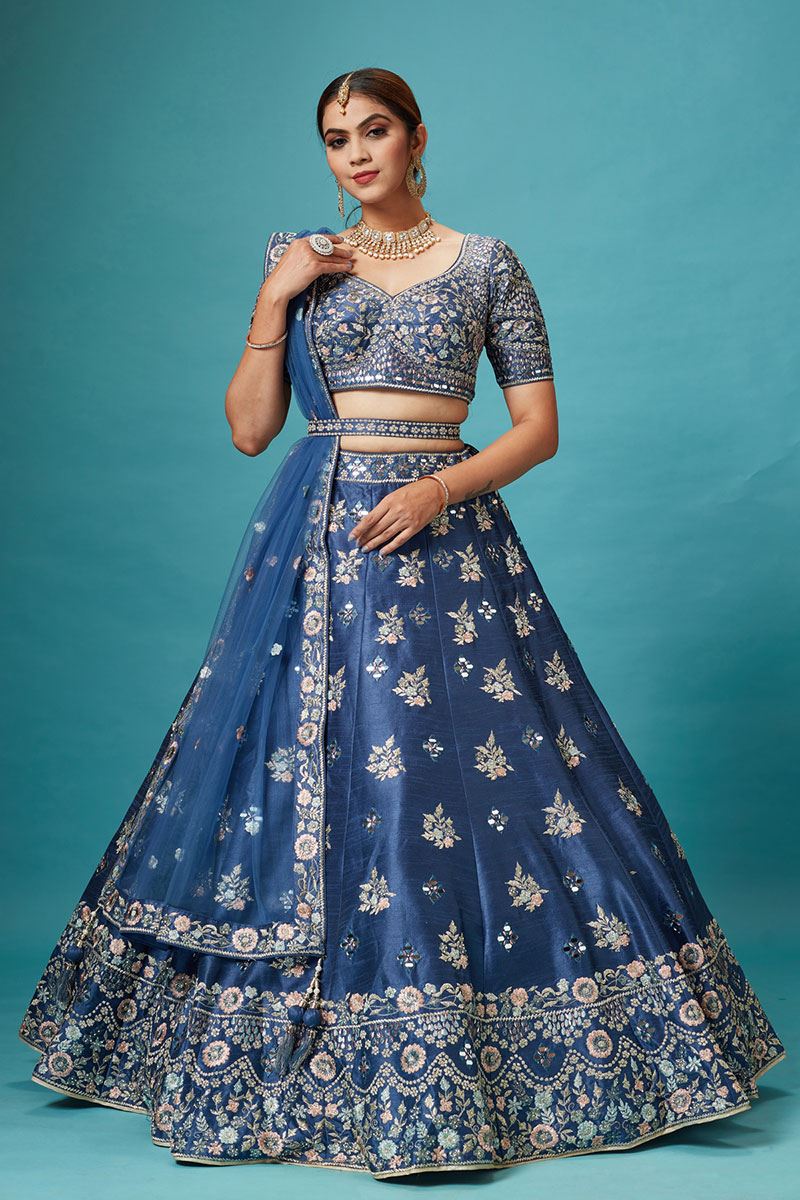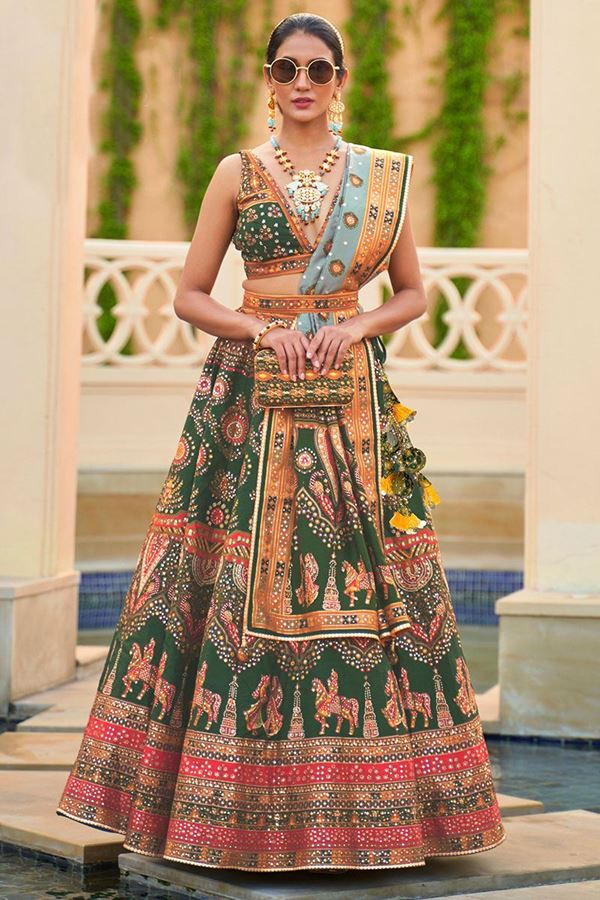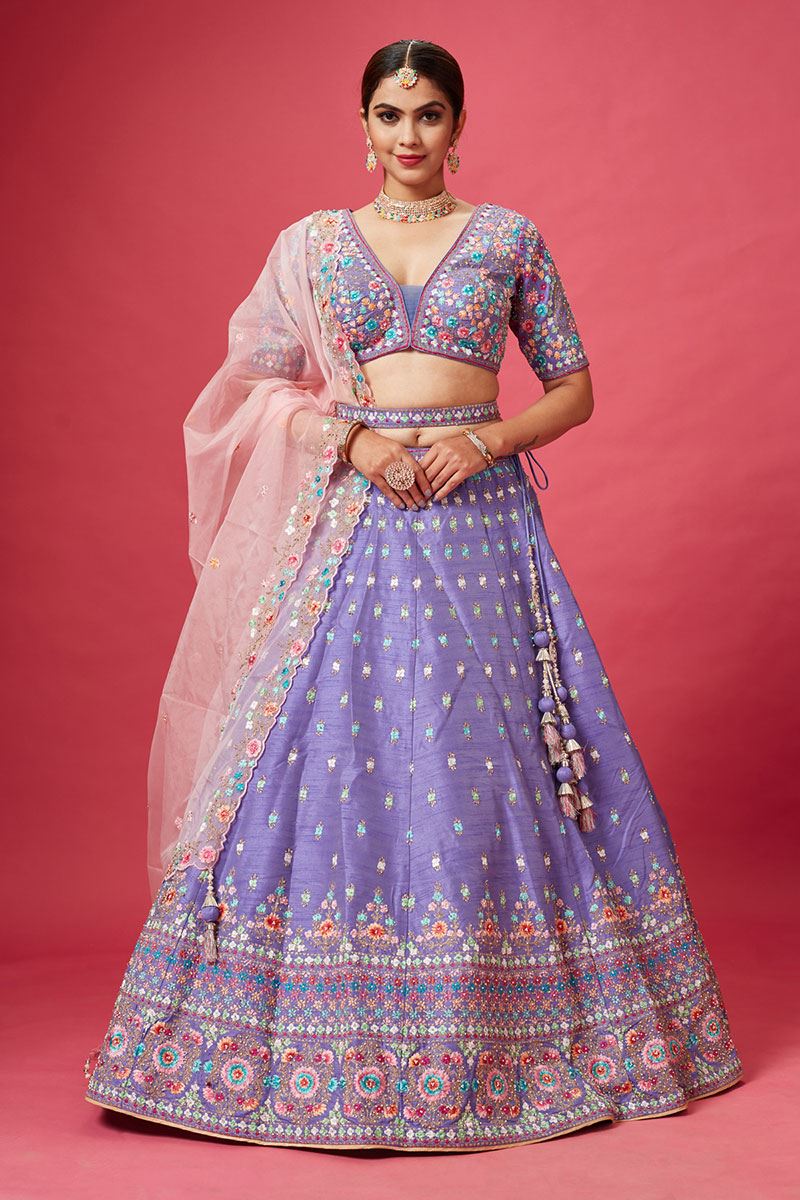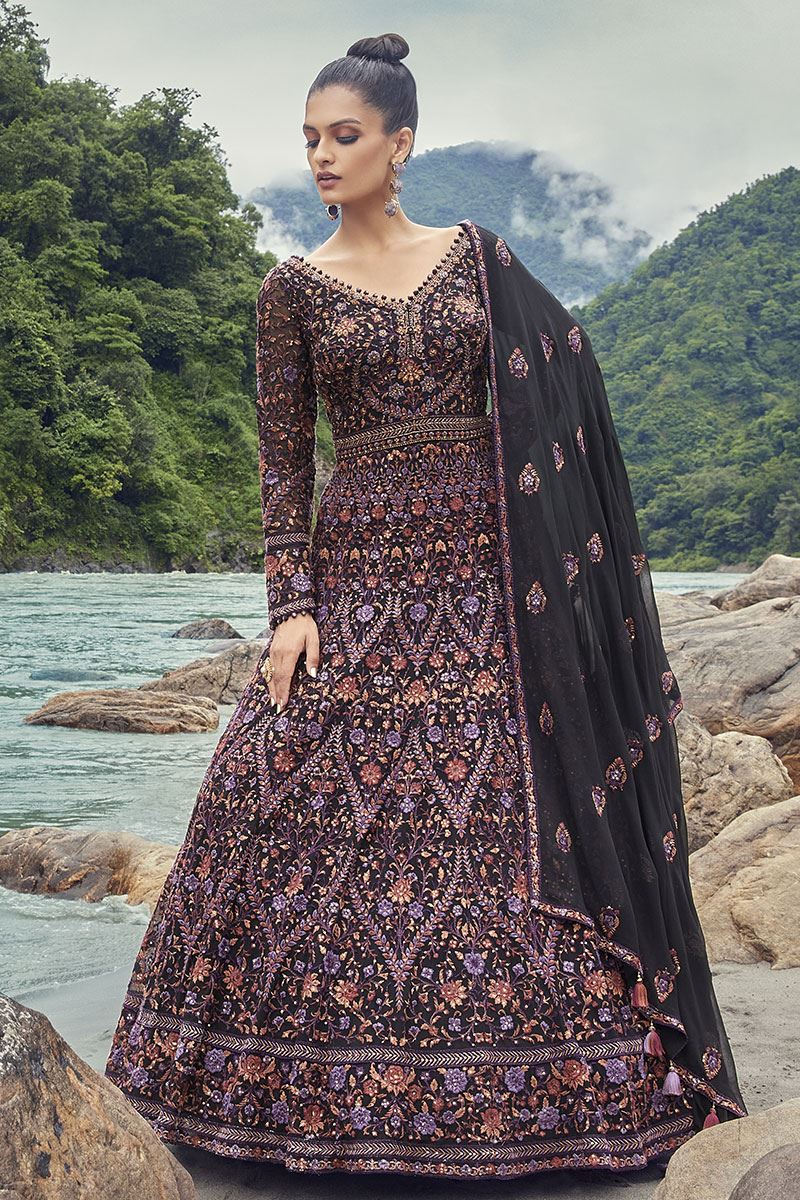Trendy Indian wedding bridal dresses
Indian wedding dresses have a rich and diverse tradition, influenced by the country's various cultures and regions. While traditional attire like sarees, lehengas, and sherwanis remain popular, there is a growing trend towards modern and fusion styles.
Indian wedding dresses are known for their exquisite craftsmanship, vibrant colors, and intricate designs. Fashion trends for Indian wedding dresses can change from season to season, but there are some timeless and trendy options that have remained popular over the years.
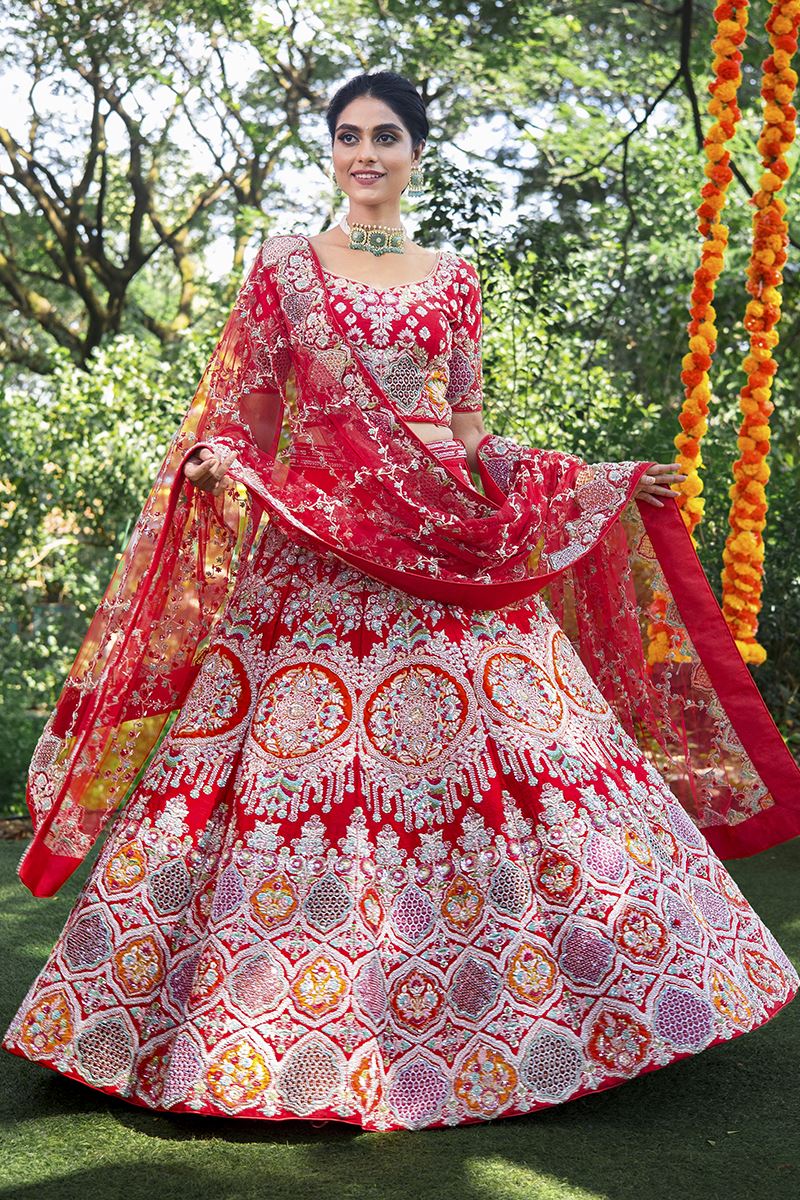
Indian bridal dresses are a significant focal point in Indian weddings, and they continue to evolve with changing fashion trends. here are some trendy bridal dress styles for Indian brides:
- Lehenga Choli: The lehenga choli is a timeless and popular choice for Indian brides. Modern variations feature unique embellishments, such as intricate hand embroidery, mirror work, and sequins. Pastel shades, as well as unconventional colors like wine, emerald green, and midnight blue, were gaining popularity.
- Saree: Traditional silk sarees with rich zari work, intricate motifs, and heavy borders continue to be a classic choice for brides. Additionally, pre-draped sarees and saree gowns offer a modern twist on this traditional attire.
- Anarkali Gowns: Anarkali gowns offer a fusion of elegance and modernity. These floor-length gowns are often heavily embroidered and embellished, making them a stunning choice for brides who want a regal look.
- Sharara Sets: Sharara sets consist of a short kurta paired with wide-legged trousers and a dupatta. These sets often feature exquisite embroidery and unique cuts, giving brides a contemporary yet traditional appearance.
-
Fusion Gowns: Indo-Western fusion gowns have gained popularity. These gowns combine the elegance of a gown with Indian embroidery and motifs. Brides often choose these for reception or engagement ceremonies.
-
Pastel Hues: Pastel-colored bridal outfits are a modern trend. Soft shades like blush pink, lavender, and mint green are being chosen by brides, especially for daytime weddings.
-
Traditional Red and Maroon: While new colors are trending, traditional red and maroon are still highly favored for bridal attire, especially for nighttime weddings. Brides often opt for heavily embellished red lehengas or sarees.
-
Velvet Bridal Lehengas: Velvet lehengas with intricate embroidery have made a comeback. They offer a regal and luxurious look, perfect for winter weddings.
-
Cape and Capelet Blouses: Bridal blouses with capes or capelets are in vogue. They add drama and elegance to the bridal attire and are a unique choice for modern brides.
-
Layered Lehengas: Layered lehengas with multiple tiers and intricate detailing are a popular choice for brides who want a grand and voluminous look.
-
Sheer and Net Fabrics: Bridal outfits with sheer and net fabrics, adorned with delicate embroidery and embellishments, create a romantic and ethereal look.
-
Customized Bridal Attire: Many brides are opting for custom-made bridal outfits that reflect their individual style and personality. This allows for a unique and personalized look.
-
Statement Jewelry: Bridal jewelry is an integral part of the overall look. Brides are opting for statement jewelry pieces, such as oversized necklaces, maang tikka, and choker sets, to enhance their bridal attire.
-
Minimalist Bridal Attire: Some brides are embracing minimalism and choosing simple, elegant bridal outfits with understated embroidery and minimal embellishments.
-
Sustainable Bridal Wear: In line with global sustainability trends, some brides are opting for eco-friendly and sustainable fabrics and designs for their wedding attire.
Remember that bridal fashion trends can vary by region in India, and personal preferences play a significant role in choosing the perfect bridal dress. It's essential to consult with a bridal fashion expert or designer to select a style that suits your individual taste, body type, and the theme of your wedding.
Remember that regional preferences and individual choices can influence the style of wedding dresses in India. It's essential for brides to choose an outfit that reflects their personal style and makes them feel confident


 +1 323 315 2595
+1 323 315 2595  +44 11621 61404
+44 11621 61404 
 shopping bag
shopping bag




